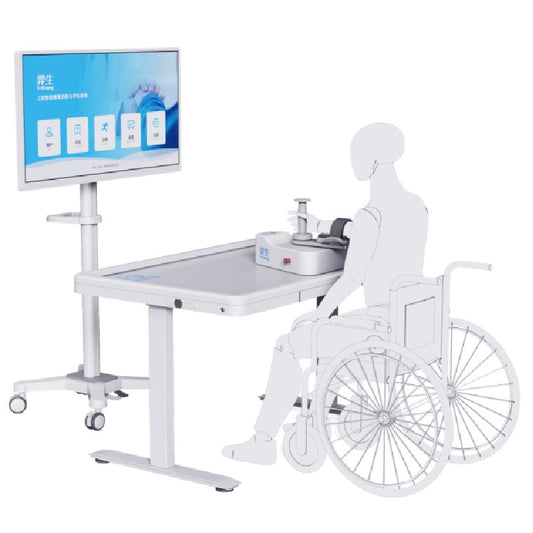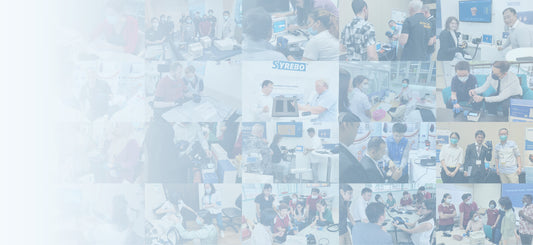Mirror Therapy Exercises for Phantom Limb Pain
Mirror therapy is a simple, easy-to-use and low-cost rehabilitation technology that is suitable for most patients who without obvious cognitive impairment. The treatment setting involves not only the hospital, but also the patient's self-management at home. However, during the clinical implementation process, due to the long and simple operation time, coupled with the long training process, some patients' cooperation and interest in training decreased, resulting in a decrease in the efficacy of mirror therapy. This is also a common confusion faced in the clinical process, that is, the limitations of single therapy. Different from traditional occupational therapy and physical therapy, mirror therapy is generally considered to be a central intervention method, that is, an intervention method that "directly" stimulates damaged brain areas or functional brain areas.
Regarding central intervention technology, domestic Professor Jia Jie took the lead in proposing a closed-loop rehabilitation model of “central-peripheral-central”. Taking mirror therapy as an example, after mirror therapy activates the central nervous system, it is effectively combined with peripheral rehabilitation intervention methods to promote the secondary activation of the central system and enhance the recovery of limb functions, thereby forming a positive closed-loop rehabilitation cycle.
Mirror Therapy classic application combined with peripheral intervention technology
(1) Mirror therapy combined with task-oriented training
Task-oriented training is an effective treatment method that uses body movements to accomplish a defined task through a specific environment. Task-oriented training requires a certain functional foundation for the hemiplegic hand of stroke patients. Therefore, its application has certain limitations in patients with early stage stroke or severe hemiplegia of hand function. Mirror therapy can make up for the shortcomings of task-oriented training in this regard. Mirror therapy provides a movement observation-execution matching mechanism, which plays an important role in neurophysiological processes such as movement observation, movement imitation, motor imagination, and motor learning. Motor imagery can activate brain neural networks similar to those that perform actual actions, which provides a theoretical basis for the early application of mirror therapy technology for motor imagery training to rehabilitate hand dysfunction after stroke. It provides effective methods for distal limb movement disorders, limb pain, sensory disturbances, hemi-neglect, etc., and bilateral limb training is more conducive to overall recovery. On the other hand, combining task-oriented training on the basis of the mirror therapy training paradigm is also an innovative point of current clinical research and attention.Based on the closed-loop rehabilitation theory, when applying mirror therapy combined with task-oriented training, the patient can be guided to "rehearse" in his mind the movements required for the hand on the hemiplegic side in the first mirror technique. And to a certain extent, it increases the ability of motor imagination and motor execution, and increases the patient's "immersion". The movements performed in subsequent task-oriented training are consistent with those performed in the mirroring technique, thereby improving the accuracy of the movements. Tang Chaozheng et al. used mirror therapy combined with task-oriented training to improve the upper limb and hand functions of a post-stroke hemineglect patient, proving the feasibility of this method. In addition, innovations based on mirror therapy equipment also provide a better platform for the combination of mirror therapy and task-oriented training. Domestic Professor Jia Jie's team innovatively proposed a multi-modal mirror device. Based on this device, bilateral task training is combined with mirror training itself, thereby innovating a training method that combines mirror therapy with task-oriented training.
(2)Mirror therapy combined with peripheral electrical stimulation
Peripheral electrical stimulation includes neuromuscular electrical stimulation, functional electrical stimulation, and biofeedback-based electrical stimulation technology. Taking FES as an example, FES is a relatively mature rehabilitation technology. This technology not only stimulates peripheral neuromuscles, but also stimulates afferent nerves and enhances the excitability of lower motor neurons. In addition, repeated forced movement pattern information is continuously transmitted to the central nervous system, which can promote the enhancement of synaptic efficiency in damaged areas of the brain and the enhancement of plasticity in damaged penumbra areas. This causes it to form excitatory traces in the cortex, thus forming a "bottom-up" nerve conduction pathway. Mirror therapy has a completely different treatment idea, which emphasizes a "top-down" treatment idea. By combining mirror therapy with FES, "top-down" and "bottom-up" nerve conduction pathways can be achieved, thereby forming a complete closed-loop rehabilitation model and promoting better recovery of peripheral limb functions. In the combination of the two, FES makes up for the shortcomings of bilateral movements in mirror therapy that cannot initiate movements on the affected side due to insufficient muscle strength or muscle tension problems on the affected side. Mirrored bilateral motion uses symmetrical motion on the unaffected side to induce motion on the affected side and solves the problem of visual feedback in FES.Many studies at home and abroad have focused on the combined application of mirror therapy and peripheral electrical stimulation. For example, research by Kim et al. found that mirror therapy combined with functional electrical stimulation assessment based on biofeedback is feasible and effective, and can promote the improvement of upper limb motor function and quality of life in stroke patients. Xu et al. studied the effectiveness of mirror therapy combined with neuromuscular electrical stimulation to promote lower limb movement recovery and walking ability in patients with foot drop after stroke. The study showed that the combination of the two can improve the walking ability and reduce spasticity in patients with foot drop after stroke. Research paradigms such as this are gradually being widely used in clinical practice, and the clinical value of mirror therapy has been continuously enhanced, benefiting more and more patients.



